Spring is on the horizon (yay!) but we’re still deep into winter (grr). And that means time for reading. Our latest roundup of noteworthy new books connected to the world of cinema features a typically diverse lineup: Bong Joon Ho, the art of James Cameron’s latest, screwball comedies, Alfred Hitchcock, and––’tis the season––Oscar history.
Bong Joon Ho: Dissident Cinema by Karen Han (Abrams)

In recent years Little White Lies and Abrams have released wonderfully comprehensive, immaculately designed books about Joel and Ethan Coen, Paul Thomas Anderson, David Fincher, and most recently Sofia Coppola. The latest subject, Bong Joon Ho, could not be more deserving of this treatment. Dissident Cinema is written by the ever-astute Karen Han, who shares Bong’s life story while diving into each entry of his filmography. Yes, there is much to be said about Parasite, The Host, Mother, Snowpiercer, Okja, and Memories of Murder. But Han also finds key connections to Bong’s later work in his debut, Barking Dogs Never Bite, described here as “the most neglected entry in Bong’s oeuvre despite its status as his first cinematic missive to the world.” Dissident Cinema concludes with interviews with some of the director’s frequent collaborators (including Tilda Swinton) a mention of his upcoming adaptation of Mickey7, and musings about his future: “That it’s impossible to guess what kind of story Bong will tell next is part of his appeal as a storyteller––it’s a pleasure to be swept away.
Oscar Wars: A History of Hollywood in Gold, Sweat, and Tears by Michael Schulman (Harper)
The 95th Academy Awards are just a few weeks away. Even if discussions of Everything Everywhere All at Once and Andrea Riseborough have grown a tad tiresome, Oscar Wars is a must-read. There have been many strong books on the meaning and significance of the Oscars, but I would call Michael Schulman’s text one of the very best. It is a thoughtful, humorous chronological study of the awards, from an idea put forth by Louis B. Mayer on a “yawning Sunday night” in Santa Monica to Will Smith smacking Chris Rock on March 27, 2022. In-between are heroes (Dalton Trumbo, Gloria Swanson, Sidney Poitier) and villains (Harvey Weinstein), along with an astonishing account of the glorious fiasco that was the Allan Carr-produced 1989 ceremony. The book ends with the aforementioned “smack,” a moment Schulman ponders with bemusement: “Had we witnessed a psychic breakdown? A husband defending his wife? A jerk? A victim? A monster? In a Hollywood ending that seemed too dark and surreal to be true, he appeared to be having the time of his life.”
The Northman: A Call to the Gods by Simon Abrams and Guillermo del Toro’s Pinocchio: A Timeless Tale Told Anew by Gina McIntyre (Insight Editions)
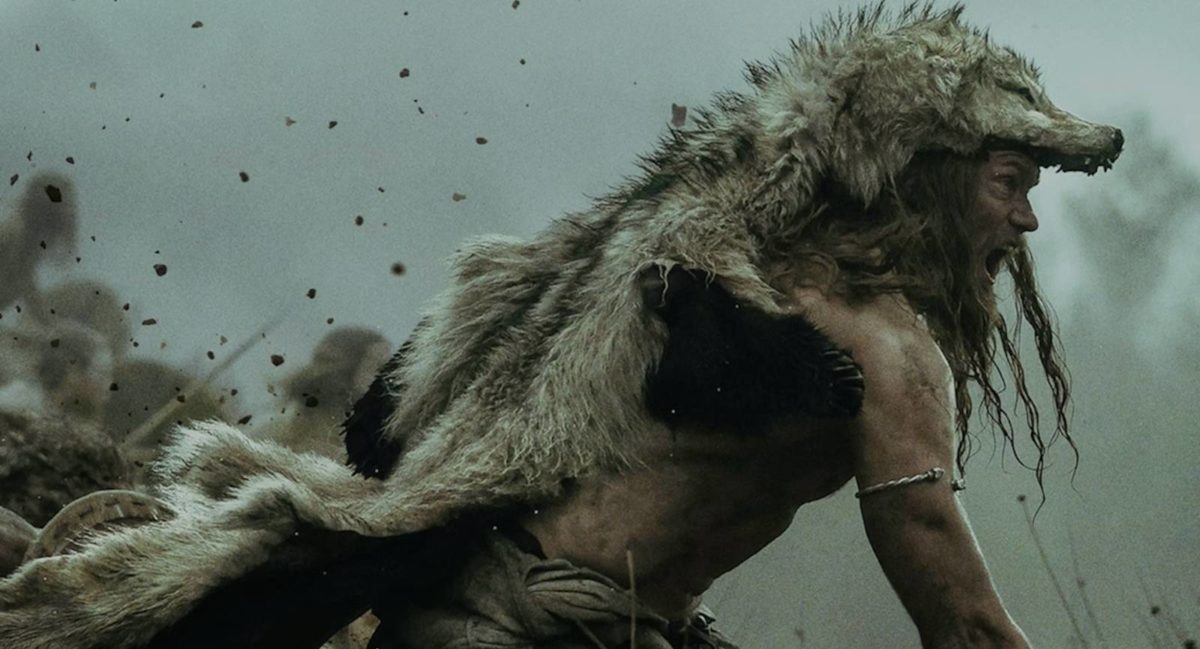
Speaking of Oscars, one of the more egregious 2023 snubs was the lack of craft category recognition for The Northman, Robert Eggers’ underrated Viking revenge epic. The costumes and designs shared in the making-of book The Northman: A Call to the Gods are positively astounding. This includes a breathtakingly detailed 50-foot-tall tapestry depicting scenes from the Völsunga saga created in India, the terrifying Mound Dweller seated on a subterranean burial throne, and the galloping Valkyrja. Guillermo del Toro’s Pinocchio, on the other hand, received some love for Best Animated Feature. Paging through the lovely Guillermo del Toro’s Pinocchio: A Timeless Tale Told Anew, however, it is clear that––at the very least––its production design also deserved to be recognized.
Appreciating the world of Pandora with three new books
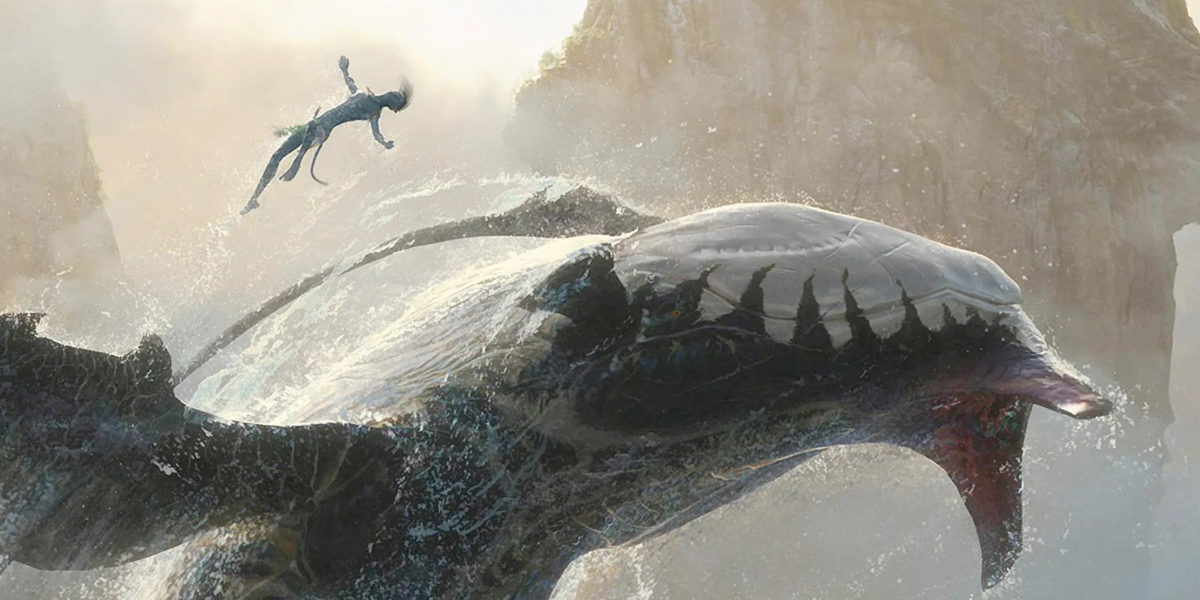
With a gargantuan worldwide box-office haul, Avatar: The Way of Water once again showed why betting against Cameron is unwise. There are of course many reasons for the success of the Avatar series, but surely one of the most notable is the care and intelligence behind the designs of its planets, people, and machinery. Three books from DK testify to that planning and design. The World of Avatar: A Visual Exploration, curated by Joshua Izzo, is a colorful look into Pandora, centered around its terrain and the Na’vi. Avatar: The Way of Water — The Visual Dictionary, by Zachary Berger, Dylan Cole, Joshua Izzo, Reymundo Perez, and Ben Procter, is focused specifically on the latest film. The book utilizes the tried-and-true style of DK’s past visual dictionaries. Lastly, The Art of Avatar The Way of Water by Tara Bennett covers the incredible development process for the sequel via concept art and interviews. Seeing the evolution of the reef-dwelling Metkayina, the whale-like Tulkun, and the massive RDA outpost makes the final product even more impressive.
Nothing to Fear: Alfred Hitchcock and The Wrong Men by Jason Isralowitz (Fayetteville Mafia Press)
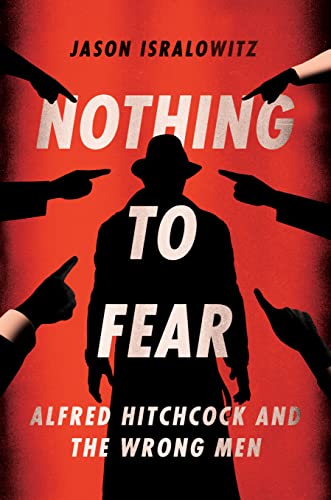
Alfred Hitchcock’s The Wrong Man is one of the less-heralded films in the master’s career. But as author Jason Isralowitz explains in Nothing to Fear: Alfred Hitchcock and The Wrong Men, it is one of the director’s most timely. The 1956 Henry Fonda-starrer was based on the true story of Christopher Emanuel “Manny” Balestrero, a wrongfully arrested musician. “This is the story of New York’s fleeting awakening, more than seventy-five years ago,” Isralowitz writes. “It is the story of how the state’s legal institutions squandered an opportunity for reform. And it is the story of how Hollywood’s most popular director made a work of art that reveals truths that those institutions refused to face.” The author connects the film to recent works like Zodiac, while also calling attention to the “experience of multiple generations of criminal defendants who become victims of a flawed justice system.” The Wrong Man, then, is a profoundly important film, and Nothing to Fear is a profoundly vital text.
Dark Carnivals: Modern Horror and the Origins of American Empire by W. Scott Poole (Counterpoint)
W. Scott Poole’s Dark Carnivals is a marvelous overview of the myriad ways horror cinema has critiqued American power. The book is a “full examination of how our monsters claw their way toward some of America’s deepest assumptions,” Poole writes. The titans of the genre––The Texas Chain Saw Massacre, Night of the Living Dead––are of course included and analyzed, but so too are films like Larry Cohen’s The Stuff. Especially insightful is his analysis of 1932 Bela Lugosi chiller White Zombie, which “probed Americans’ fears about Haiti and legitimated them.”
Number One Is Walking: My Life in the Movies and Other Diversions by Steve Martin (Celadon Books)
It has been a real treat to see Steve Martin (and Martin Short) achieve late-career success in Hulu’s Only Murders in the Building. But I miss seeing him on the big screen. In Number One Is Walking, an illustrated (by Harry Bliss) memoir of his acting career, Martin writes, “The TV show became my creative outlet; I didn’t need movies anymore.” Martin’s satisfaction is much-deserved, but Number One does remind us of genius performances in everything from The Jerk and Planes, Trains and Automobiles to The Spanish Prisoner. If Martin never returns to cinemas, Number One is Walking will serve as fitting farewell.
Voices of Hollywood, and the father of screwball comedy
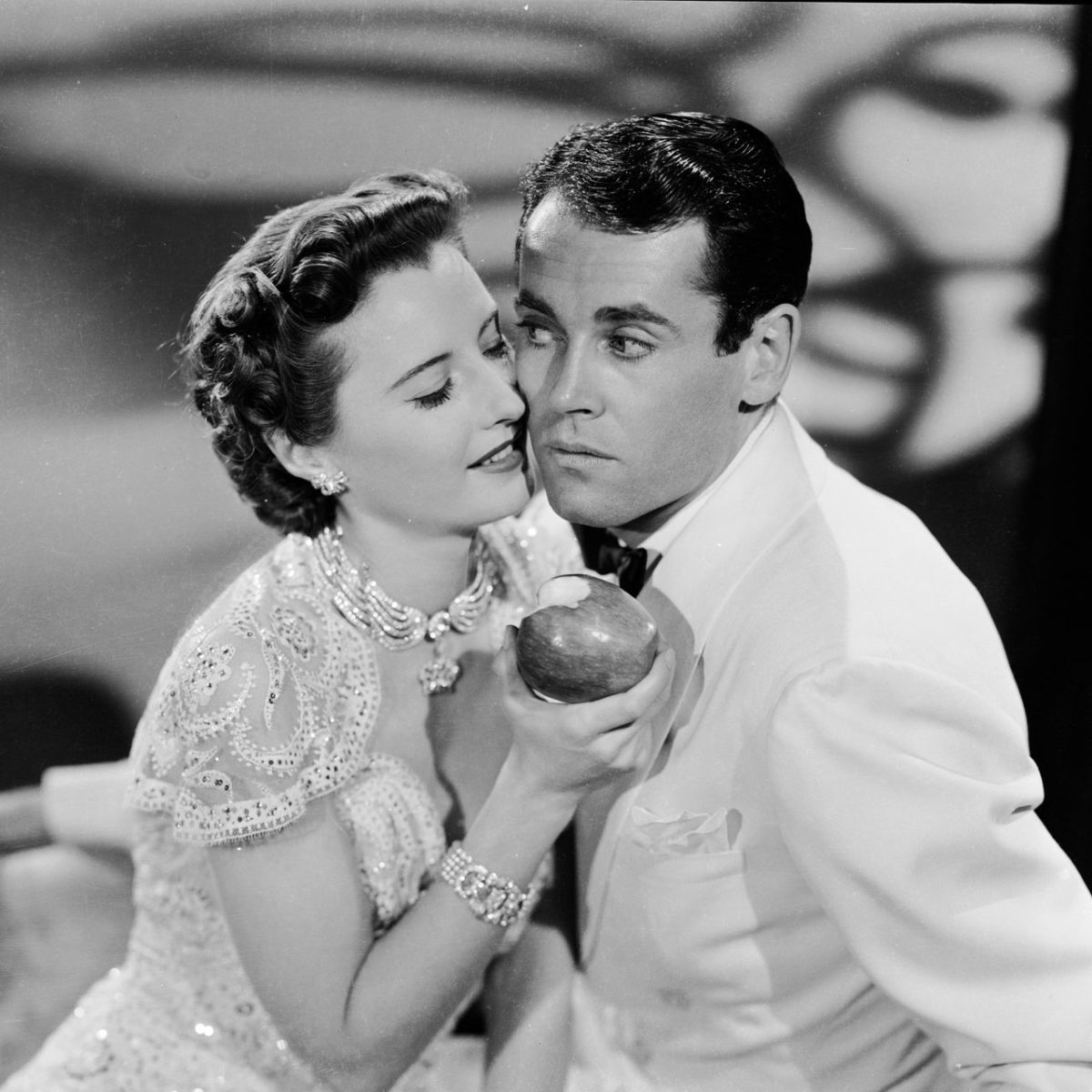
It would be inaccurate to say that Hollywood: The Oral History by Jeanine Basinger and Sam Wasson (Harper) only touches on “old” Hollywood; this collection of quotes from the American Film Institute’s thousands of archival interviews includes mentions of semi-recent releases like Parasite and Nomadland. Still, for me, the most fascinating remarks here are those of late directors like Howard Hawks and stars like Natalie Wood. (A George Cukor hot take: “I was never infatuated with Citizen Kane.”) It is a positively gargantuan book––more than 700 pages––and achieves something pretty remarkable: it provides a legitimately comprehensive review of Hollywood history. Speaking of old Hollywood legends, the writer-director of Sullivan’s Travels and The Lady Eve is the subject of Crooked, But Never Common: The Films of Preston Sturges by Stuart Klawans (Columbia University Press). The book is both a compelling biography of Sturges and a close read of his films, and Klawans writes with great wit and insight. I especially enjoyed the author’s closing analysis of recent films that owe a debt to Sturges; of Can You Ever Forgive Me? he writes, “As Sturges would have done, [Marielle] Heller takes the side of the abrasive, sharp-tongued [Lee] Israel (without excusing her wrongdoing).”
For the kids (and parents):
For me, one of the more memorable moments of 2022 moviegoing was seeing Steven Spielberg’s E.T. the Extra-Terrestrial on the big screen for the first time. What made it even better was watching it with my 12-year-old. He embraced the film just as I did many years ago, so both of us were thrilled to page through E.T. the Extra-Terrestrial: The Ultimate Visual History by Caseen Gaines (Insight Editions). Like all of the publisher’s “Ultimate Visual History” books, this one offers an in-depth look at the creation, production, success, and afterlife of the film. It is also filled with pull-out recreations of script notes, movie tickets, and drawings. There is even a nice look at the droll 2019 Comcast commercial that reunited an adult Elliott (played once more by Henry Thomas) and his pal. The latest DK Harry Potter LEGO book, LEGO Harry Potter: A Spellbinding Guide to Hogwarts Houses, is another brick-filled romp through the Wizarding World, this time centered on the Gryffindor, Slytherin, Hufflepuff, and Ravenclaw houses. It also comes with a Percy Weasley mini-figure. Meanwhile, The LEGO Story: How a Little Toy Sparked the World’s Imagination by Jens Andersen (Mariner) is for slightly older readers. But LEGO fandom is not a prerequisite for enjoying this one. Andersen documents the toymaker’s creative and commercial successes and failures, and his account is bolstered by interviews with former LEGO president and CEO Kjeld Kirk Kristiansen.
TV talk:
“The Fresh Prince of Bel-Air, this lark, this silly thing, with all its fluorescent pinks and yellows and greens, became emblazoned on our collective consciousness,” writes Chris Palmer in The Fresh Prince Project (Atria Books). The Fresh Prince endures, and Palmer details many of the reasons why this is the case. The book details the show’s rocky start, Will Smith’s rise to stardom, and how certain episodes––such as season four’s “Papa’s Got a Brand New Excuse,” featuring the return of Will’s long-absent father––continue to make an impact. Palmer’s text is insightful and entertaining. And it may cause readers to revisit a show so many of us grew up with.
Meanwhile, It’s Not TV: The Spectacular Rise, Revolution, and Future of HBO by Felix Gillette and John Koblin (Viking) tells the remarkable tale of the network that changed television. As described here, HBO’s wild-and-wooly early days include an initial launch for 375 subscribers in Pennsylvania and, a few years later, the satellite airing of the “Thrilla in Manilla.” (“The executives in Florida gaped nervously as the screen flickered in front of them. The technology worked.”) There are a great many heroes and villains in HBO’s history and all are under the microscope in this strong showbiz analysis.
Speaking of HBO: Game of Thrones: House of the Dragon: Inside the Creation of a Targaryen Dynasty by Gina McIntyre (Insight Editions) details the Thrones’ spinoff’s complicated development and intricate designs. As the production stills (and series itself) make clear, the effort was worthwhile. An HBO classic is the focus of The Wire: The Complete Visual History by D. Watkins and David Simon (Insight Editions). It serves as a reminder of the series’ utter brilliance and deep attention to detail. The book ends, fittingly, with a tribute to the late Michael K. Williams, whose Omar Little is (inarguably) one of the great characters in television history. What a performance, what a show. Finally, The Kick-A** Book of Cobra Kai: An Official Behind-the-Scenes Companion by Rachel Bertsche (Dey Street Books) is the official companion to the tremendously successful Netflix series, featuring behind-the-scenes info, cast interviews, and some fun fake notes from the characters
Recently adapted fiction and non-fiction:
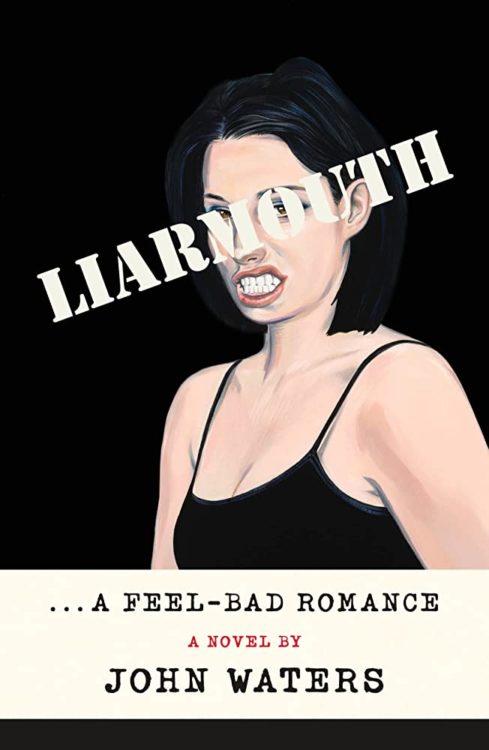
M. Night Shyamalan’s Knock at the Cabin is in theaters now, and as usual is drawing both praise and scorn. I’ve not seen it yet, but I’m looking forward to it after finishing its terrifying source material. A movie tie-in edition of The Cabin at the End of the World by Paul Tremblay (William Morrow) is out now.
It took me a few months to get to the first novel by John Waters, Liarmouth: A Feel-bad Romance (Farrar, Straus and Giroux). I should have read it much sooner. The delightfully filthy story of a suitcase thief is set to be Waters’ first film since A Dirty Shame.
A TV series adaptation of Sara Foster’s dystopian thriller The Hush is in the works, and a series or film of her newest novel, The Deceit, will likely follow soon (Black Stone Publishing). The Australian author has become known for her white-knuckle thrillers.
Blu-ray:
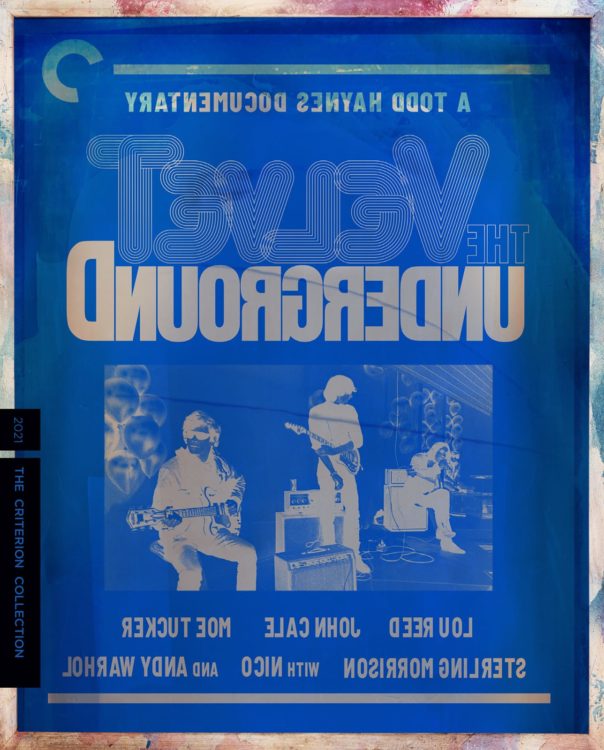
As usual, we close with several 4K / Blu-ray / DVD recommendations. These four are important films from master filmmakers. First is the long-awaited Criterion Collection release of Terry Gilliam’s The Adventures of Baron Munchausen. His infamously extravagant chronicle of the 18th-century nobleman has never looked better, and the supplements––including commentaries and documentaries––are extraordinary. The booklet essay from Films of Endearment author Michael Koresky captures the appeal of Gilliam’s “work of pure, rigorous enchantment, employing old-fashioned technical wizardry to bring about its astonishments.”
Todd Haynes’ The Velvet Underground (Criterion) is equally astonishing, a documentary that, over the course of 126 minutes, manages to tell both the history of a band and the underground culture that revolutionized 20th-century art. The release also includes a 2021 Greil Marcus essay in which the critic deciphers how “all of Haynes’ previous films can feel like a warm-up to The Velvet Underground.”
Criterion also recently issued a 4K release of Wong Kar Wai’s In the Mood for Love (Criterion). Yes, many of us own multiple releases of Mood, including past Criterion editions. But a 4K release of the most beautiful film of the 21st century? That’s a must, even if you picked up the World of Wong Kar Wai set in 2021.
Lastly, one of my favorite films of 2022 was Bones and All, and it should find new life following its recent Blu-ray and DVD release from Warner Bros. Home Entertainment. The disc features a few special features, including an interview with director Luca Guadagnino. Its greatest asset is the film itself, a cannibal love story dripping with tension and awash with grim beauty. Bones also features mesmerizing performances from Taylor Russell, Timothée Chalamet, and Mark Rylance. I recommend following your viewing by reading Camille DeAngelis’ novel.
